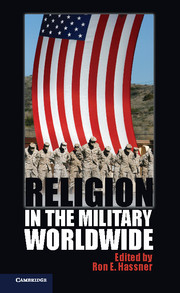Introduction
Religion in the Military Worldwide: Challenges and Opportunities
Published online by Cambridge University Press: 05 June 2014
Summary
Consider the following three episodes involving religious practices in the military. The first, set during the Second Kashmir War, was reported by Indian Lt. Gen. Ranjit Singh Dayal: “In 1965 we went into an objective. There we saw some cows grazing. Suddenly the shelling started. One cow got hurt by a shell and I saw a jawan [Indian soldier] pulling out his field dressing and applying it to the cow.”
The second episode occurred in Samarra, Iraq, in the spring of 2004. Sgt. Jeffrey Humphrey, of the 1st Infantry Division, noticed that his men had painted a text in giant Arabic script on the side of a Bradley armored vehicle. “‘What’s it mean?’ asked Humphrey. ‘Jesus killed Mohammed,’ one of them said. The soldiers guffawed. JESUS KILLED MOHAMMED was about to cruise into the Iraqi night.” An Iraqi interpreter took to the roof of the vehicle, bullhorn in hand, to shout out the phrase in Arabic and English. As the soldiers drove through the streets of Samarra, their blasphemous proclamations drew live fire from the city’s residents. The soldiers responded with 25-millimeter shells.
- Type
- Chapter
- Information
- Religion in the Military Worldwide , pp. 1 - 20Publisher: Cambridge University PressPrint publication year: 2013
References
- 2
- Cited by



